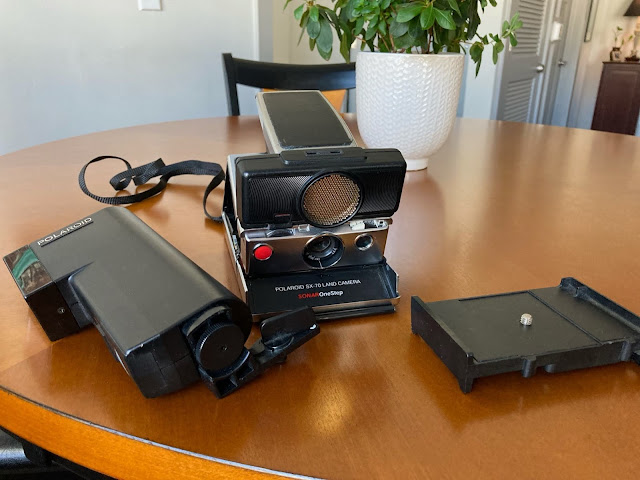Today's Post is from Kevin Lane
Today is Saturday, December 8, 2018, and the weather outside could not be more gloomy. The rain has fallen all day long, and the temperature has hovered at 40º. It could not be a worst day for outdoor photography, so as my cameras sat idly on the shelf, my wife, Debbie, and I hung our outdoor Christmas decorations during a moment of light drizzle. As I write this, we are relaxing in our cozy and warm living room listening to Christmas jazz and writing Christmas cards. Candles are glowing, and soon we will begin preparing a nice romantic dinner and choose from our holiday-related movies list. A nice Saturday despite the lousy weather.
It was only a few days ago that I was thinking about my photography goals for 2019, specifically about how one of those goals was to remain active even in the dreariest portions of winter. A day like today shows how difficult is may be to attain this goal here in northwest Georgia, as today is a typical winter day in this region. Winter here is usually wet, but not usually cold enough for snow. There are exceptions, however, and it is not unusual to get at least one snow of a few inches - just enough to close schools and give us school teachers a welcome day off. But a typical winter in north Georgia is cold, wet, and dreary - not a great mix for photography.
Nevertheless, I plan to shoot more film this winter than I ever have before. I specifically want to capture the winter mood - bare trees, dead vegetation, muted shades of gray, etc. I never used to see the beauty of the winter mood, but Debbie has been a big influence on me. She loves to see bare trees against the winter sky, and I have to admit that I have begun to see the winter light in a new way - the subtle shades of gray, the muted colors, the lack of shadows on overcast days. I'm thinking that this would be great weather to get in close on subjects and capture architectural details that stand out more in low contrast light, like weathered wood, stonework, old ironwork, peeling paint, and reflections in windows. I am excited about the possibilities.
I think winter is a good time to practice becoming your own light meter. If you understand the "Sunny
f16" rule,* then you will be opening up your exposure settings by two stops for cloudy but bright days with little or no shadow three stops for heavy overcast, and four stops for deep shade or sunset light. I make careful note about the amount of light and choose what I think would be the best exposure. However, to improve my skills, I will make two or three exposures of the same scene cloudy day scene - one at two stops open, one at three, and maybe one at four. This is called "bracketing," and the idea is that, in all likelihood, one of the exposures will be the best. When I bracket, I always go from more closed to more open so that, when see the negatives and scans later, I can compare the results to what I was thinking at the time (although I don't usually do this, it would really help to make field notes when shooting. Perhaps I will add "make field notes" as a new goal for 2019 . . .) With practice, I hope to gain confidence in my "eye-metering." Of course, I could use my camera's meter or the myLightmeter Pro app on my iPhone, but the essence of photography is understanding light, right? And light meters can be fooled in some situations.
Speaking of light, one of the practical problems with winter photography is dealing with short days. I leave for work before the sun rises (school teacher, remember?) and often don't get home before it starts to get dark. But here is an encouraging thought: December 21 is the Winter Solstice, the shortest day of the year. Technically, winter begins that day, but the daytime will begin to increase slowly but surely. Since I carry a loaded camera with me pretty much all the time these days, I am going to get more and more opportunities to capture the winter mood and the winter days pass. Seize the winter day . . .
 |
Although shot in early November, it was a cold, rainy day when I stopped on my way
home from work to photograph this old abandoned barn. Holga 120N with Ilford HP5+,
home processed. |
 |
As I walked around this old barn, I found an interesting arrangement of truck parts that
deserved to be captured on film. Holga 120N with Ilford HP5+, home processed. |
 |
It certainly was cold and snowy, but I love the contrast between
the subtle colors of the light son this street in Bergen, Norway,
and the various shades of gray. Minolta 7s with Kodak Gold 200, home processed. |
 |
The light from the overcast sky brought out details that would have
been lost in the direct lighting of a sunny day in Bergen, Norway.
Minolta 7s with Kodak Gold 200, home processed. |
*On sunny days for subject in bright sunlight, exposure will be
f16 for aperture and whatever your film speed is for shutter speed. If you open up one setting, then close ("stop") down the other setting with the same number of stops. For example, if you are shooting ISO 100,
f11 and 1/125 work, as does
f8 and 1/250,
f5.6 and 1/500, and
f4 and 1/1000. There are exceptions, of course, such as white subjects (close one stop) sidelit subjects (open one stop) and backlit subjects (open two stops). I suggest memorizing Sunny f16 stop combinations for your favorite films. You will be much faster at setting your exposure on your camera once you have "eye-metered" the scene.







